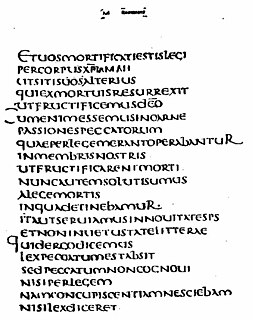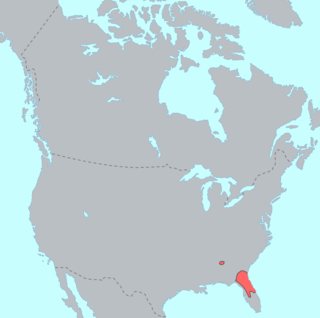Related Research Articles

Khmer is an Austroasiatic language spoken by the Khmer people, and the official and national language of Cambodia. Khmer has been influenced considerably by Sanskrit and Pali, especially in the royal and religious registers, through Hinduism and Buddhism. It is also the earliest recorded and earliest written language of the Mon–Khmer family, predating Mon and Vietnamese, due to Old Khmer being the language of the historical empires of Chenla, Angkor and, presumably, their earlier predecessor state, Funan.

The Eskimo–Aleut, Inuit–Yupik–Unangan, or Eskaleut languages are a language family native to the northern portions of the North American continent and a small part of eastern Asia. Languages in the family are indigenous to parts of what are now the United States (Alaska); Canada (Inuit Nunangat including Nunavut, Northwest Territories, northern Quebec, and northern Labrador ; Denmark ; and the Russian Far East. The language family is also known as Eskaleutian, Eskaleutic or Inuit–Yupik–Unangan.

Madí—also known as Jamamadí after one of its dialects, and also Kapaná or Kanamanti (Canamanti)—is an Arawan language spoken by about 1,000 Jamamadi, Banawá, and Jarawara people scattered over Amazonas, Brazil.
Denaʼina, also Tanaina, is the Athabaskan language of the region surrounding Cook Inlet. It is geographically unique in Alaska as the only Alaska Athabaskan language to include territory which borders salt water. Four dialects are usually distinguished:
- Upper Inlet, spoken in Eklutna, Knik, Susitna, Tyonek
- Outer Inlet, spoken in Kenai, Kustatan, Seldovia
- Iliamna, spoken in Pedro Bay, Old Iliamna, Lake Iliamna area
- Inland, spoken in Nondalton, Lime Village

Crow is a Missouri Valley Siouan language spoken primarily by the Crow Nation in present-day southeastern Montana. The word, Apsáalooke, translates to "children of the raven." It is one of the larger populations of American Indian languages with 2,480 speakers according to the 1990 US Census.
Neo-Mandaic, sometimes called the "ratna", is the modern reflex of the Mandaic language, the liturgical language of the Mandaean religious community of Iraq and Iran. Although severely endangered, it survives today as the first language of a small number of Mandaeans in Iran and in the Mandaean diaspora. All Neo-Mandaic speakers are multilingual in the languages of their neighbors, Arabic and Persian, and the influence of these languages upon the grammar of Neo-Mandaic is considerable, particularly in the lexicon and the morphology of the noun. Nevertheless, Neo-Mandaic is more conservative even in these regards than most other Neo-Aramaic languages.

A word can be generally defined as a basic element of language that carries an objective or practical meaning, can be used on its own, and is uninterruptible. Despite the fact that language speakers often have an intuitive grasp of what a word is, there is no consensus among linguists on its definition and numerous attempts to find specific criteria of the concept remain controversial. Different standards have been proposed, depending on the theoretical background and descriptive context; these do not converge on a single definition. Some specific definitions of the term "word" are employed to convey its different meanings at different levels of description, for example based on phonological, grammatical or orthographic basis. Others suggest that the concept is simply a convention used in everyday situations.

The Tonkawa language was spoken in Oklahoma, Texas, and New Mexico by the Tonkawa people. A language isolate, with no known related languages, Tonkawa has not had L1 speakers since the mid 1900s. Most Tonkawa people now only speak English.

Timucua is a language isolate formerly spoken in northern and central Florida and southern Georgia by the Timucua peoples. Timucua was the primary language used in the area at the time of Spanish colonization in Florida. Differences among the nine or ten Timucua dialects were slight, and appeared to serve mostly to delineate band or tribal boundaries. Some linguists suggest that the Tawasa of what is now northern Alabama may have spoken Timucua, but this is disputed.
Tübatulabal is an extinct Uto-Aztecan language, traditionally spoken in Kern County, California, United States. It is the traditional language of the Tübatulabal, who have now shifted to English. The language originally had three main dialects: Bakalanchi, Pakanapul and Palegawan.
The Yimas language is spoken by the Yimas people, who populate the Sepik River Basin region of Papua New Guinea. It is spoken primarily in Yimas village, Karawari Rural LLG, East Sepik Province. It is a member of the Lower-Sepik language family. All 250-300 speakers of Yimas live in two villages along the lower reaches of the Arafundi River, which stems from a tributary of the Sepik River known as the Karawari River.
Apma is the language of central Pentecost island in Vanuatu. Apma is an Oceanic language. Within Vanuatu it sits between North Vanuatu and Central Vanuatu languages, and combines features of both groups.
Central Alaskan Yupik, or Yupʼik is one of the languages of the Yupik family, in turn a member of the Eskimo–Aleut language group, spoken in western and southwestern Alaska. Both in ethnic population and in number of speakers, the Central Alaskan Yupik people form the largest group among Alaska Natives. As of 2010 Yupʼik was, after Navajo, the second most spoken aboriginal language in the United States. Yupʼik should not be confused with the related language Central Siberian Yupik spoken in Chukotka and St. Lawrence Island, nor Naukan Yupik likewise spoken in Chukotka.

Maliseet-Passamaquoddy (skicinuwatu) is an endangered Algonquian language spoken by the Maliseet and Passamaquoddy peoples along both sides of the border between Maine in the United States and New Brunswick, Canada. The language consists of two major dialects: Maliseet, which is mainly spoken in the Saint John River Valley in New Brunswick; and Passamaquoddy, spoken mostly in the St. Croix River Valley of eastern Maine. However, the two dialects differ only slightly, mainly in accent. The indigenous people widely spoke Maliseet-Passamaquoddy in these areas until around the post-World War II era when changes in the education system and increased marriage outside of the speech community caused a large decrease in the number of children who learned or regularly used the language. As a result, in both Canada and the U.S. today, there are only 600 speakers of both dialects, and most speakers are older adults. Although the majority of younger people cannot speak the language, there is growing interest in teaching the language in community classes and in some schools.
Mamaindê, also known as Northern Nambikwara, is a Nambikwaran language spoken in the Mato Grosso state of Brazil, in the very north of the indigenous reserve, Terra Indígena Vale do Guaporé, between the Pardo and Cabixi Rivers. In the southern part of the reserve, speakers of Sabanê and Southern Nambikwara are found.
Mehek is a Tama language spoken by about 6300 people in a somewhat mountainous area along the southern base of the Torricelli Mountains in northwestern Papua New Guinea. Mehek is spoken in six villages of Sandaun Province: Nuku, Yiminum, Mansuku, Yifkindu, Wilwil, and Kafle. Mehek is most closely related to Pahi, with 51% lexical similarity, and spoken approximately 20 kilometers to the southwest. Mehek is a fairly typical Papuan language, being verb-final, having a relatively simple phonology, and agglutinative morphology. There is very little published information about Mehek. The literacy rate in Tok Pisin, spoken by nearly everyone, is 50-75%. Mehek is not written, so there is no literacy in Mehek. Tok Pisin is primarily used in the schools, with 50% children attending. There is also a sign language used by the large number of deaf people in the Mehek community.
Poula is an Angami-Pochuri language that is predominantly spoken by the Poumai Naga people in Senapati district in Manipur and Phek district in Nagaland, India. The language of Chingjaroi is also closely related to Poula.
Grass Koiari (Koiali) is a Papuan language of Papua New Guinea spoken in the inland Port Moresby area. It is not very close to the other language which shares its name, Mountain Koiali. It is considered a threatened language.
Mortlockese, also known as Mortlock or Nomoi, is a language that belongs to the Chuukic group of Micronesian languages in the Federated States of Micronesia spoken primarily in the Mortlock Islands. It is nearly intelligible with Satawalese, with an 18 percent intelligibility and an 82 percent lexical similarity, and Puluwatese, with a 75 percent intelligibility and an 83 percent lexical similarity. The language today has become mutually intelligible with Chuukese, though marked with a distinct Mortlockese accent. Linguistic patterns show that Mortlockese is converging with Chuukese since Mortlockese now has an 80 to 85 percent lexical similarity.
Vamale (Pamale) is a Kanak language of northern New Caledonia. The Hmwaeke dialect, spoken in Tiéta, is fusing with Haveke and nearly extinct. Vamale is nowadays spoken in Tiendanite, We Hava, Téganpaïk and Tiouandé. It was spoken in the Pamale valley and its tributaries Vawe and Usa until the colonial of war of 1917, when its speakers were displaced.
References
- ↑ Bandial at Ethnologue (19th ed., 2016)
- ↑ Sapir, John David. 1971. West Atlantic: An Inventory of the languages, their Noun Class systems and consonant Alternations. In Current Trends in Linguistics, ed. Thomas Seboek, A., 45-112. The Hague: Mouton.
- ↑ Barry, Abdoulaye. 1987. The Joola languages: subgrouping and reconstruction, Languages and Cultures, University of London, School of Oriental and African Studies: PhD.
- 1 2 3 4 5 6 7 8 Sagna, Serge (2008). Formal and semantic properties of the Gújjolaay Eegimaa (a.k.a Banjal) nominal classification system (PhD). University of London.
- ↑ Bassène, Alain-Christian (2006). Description du jóola banjal. Lyon: Université Lumière Lyon 2, PhD. p. 8.
- ↑ Goodchild, Samantha (2018). Sociolinguistic spaces and multilingualism: practices and perceptions in Essyl, Senegal. London: SOAS University of London, PhD.
- 1 2 3 4 5 6 Bassene, Mamadou (2012). Morphophonology of Joola Eegimaa (PhD). University of Minnesota. hdl:11299/136031.
- ↑ Welmers, William E. 1973. African language structures. Berkeley: University of California Press.
- ↑ Berndt, Karine. 2004. Manuel d’alphabétisation de transition: Français-Bandial. Dakar: SIL
- ↑ Berndt 2011.
Sources
- Berndt, Wolfgang (2011). "Bandial spelling guide". SIL.